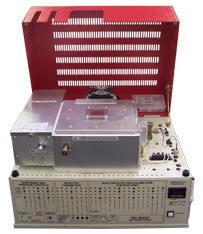Excellent selectivity is provided by gas chromatography through the employment of particular stationary phases and column arrangements. This selectivity enables the separation of substances with comparable physical properties, improving the precision and dependability of the analysis.

A popular analytical method for separating and analyzing volatile chemicals in diverse samples is gas chromatography (GC). A GC Column capillary column, which is essential to producing high-resolution separations, is it's beating heart. Fused silica capillary columns have become one of the most popular capillary column alternatives due to their outstanding performance and adaptability. The importance of fused silica capillary columns in improving analytical accuracy in gas chromatography is highlighted in this article, which examines their main characteristics and advantages.
Getting to Know Capillary Columns
Gas chromatographs have tubular parts called capillary columns that make it easier to separate and analyze volatile chemicals. The small inner diameter of these columns, which is typically in the range of 0.1-0.53 mm, is intended to improve the surface area for effective sample interactions.
A Game-Changer: Fused Silica Capillary Columns
Due to their distinctive characteristics, fused silica capillary columns have revolutionized gas chromatography. These columns' basic material is fused silica, a highly pure type of silica. This material is a great option for demanding analytical applications because of its high thermal stability, inertness, and mechanical strength.
Fused silica capillary columns' low thermal mass and strong thermal conductivity enable quick and effective temperature programming, giving researchers great control over the separation process. Furthermore, due to their improved inertness, undesired interactions between the sample and the column are reduced, resulting in accurate and repeatable results.
Applications and Benefits
Using fused silica capillary columns in gas chromatography has a number of benefits for analytical labs. The separation of complicated mixtures with good peak resolution made possible by their high resolving power first allows for more precise compound identification and quantification. Because of this, fused silica capillary columns are particularly well suited for use in forensics, food safety, environmental studies, and pharmaceutical research.
Additionally, fused silica capillary columns have a high sample loading capacity due to their tiny inner diameter, which enables the analysis of trace-level components. Their adaptability to a variety of industries is further increased by their compatibility with a variety of detectors, such as mass spectrometry (MS), thermal conductivity detectors (TCD), PID Analyzers, and flame ionization detectors (FID).
Maintenance and Column Lifespan
Fused silica capillary columns must be handled and maintained carefully to ensure optimal performance. Column performance may be negatively impacted by sample residue contamination, column bleed, or stationary phase degradation. To maximize the column's lifespan and performance, regular column conditioning, adequate sample preparation methods, and optimal column storage are crucial.
Fused silica capillary columns can provide consistent and dependable results for a long time provided they are properly maintained. To ensure accurate and exact chromatographic separations, it is crucial to track column performance over time and replace them as necessary.
Importance of Gas chromatography
The powerful analytical method known as GC analyzer has many uses in both scientific and industrial domains. The following are some major benefits of gas chromatographs:
● High Separation Efficiency
Gas chromatography has a high separation efficiency that makes it possible to resolve complicated combinations. With high precision and accuracy, the approach can isolate and identify particular components that are present in a sample mixture. In situations where the identification and quantification of target molecules are crucial, this feature is very useful.
● Sensitivity
Gas chromatography has a reputation for having high sensitivity, making it possible to detect and analyze chemicals in low quantities. This sensitivity is essential in areas requiring trace-level detection, such as environmental analysis, forensics, and pharmaceutical research.
● Versatility
In terms of sample types and analyte classes that can be analyzed, gas chromatographs are flexible. GC can handle a variety of sample matrices, including volatile organic compounds (VOCs), gases, and semi-volatile chemicals. Additionally, it works with several detectors, including mass spectrometry (MS), thermal conductivity detectors (TCD), and flame ionization detectors (FID). This enables a range of analytical applications.
● Speed
Gas chromatography column supplier is an effective method for high-throughput analysis since it offers quick analysis times. Rapid separations are possible without sacrificing resolution because of the use of capillary columns with smaller internal diameters and cutting-edge column technology.
Conclusion
Gas chromatography now performs and operates substantially better because of fused silica capillary columns. They are essential instruments for obtaining high-resolution separations and precise compound identification because of their remarkable temperature stability, inertness, and flexibility. Researchers are given increased analytical precision when fused silica capillary columns are utilized in gas chromatographic operations, which enable breakthroughs in a variety of scientific domains.
Comments
Post a Comment